11 Stories That Prove Kindness Takes Just a Moment, but Lives On Forever

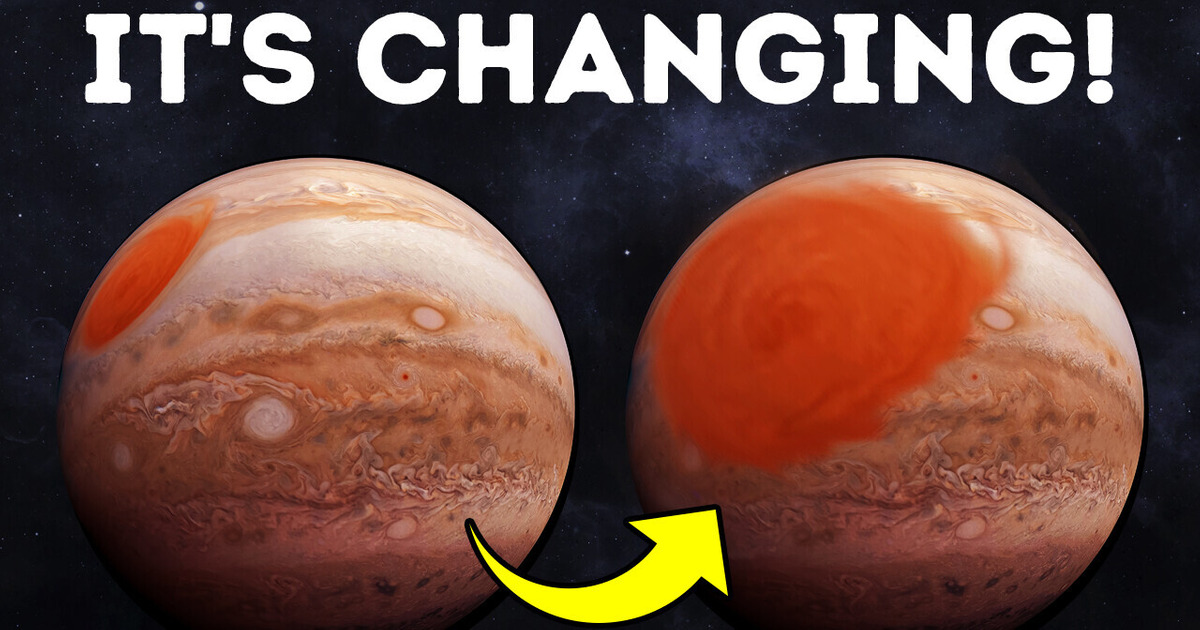
Hurricane alert! Everyone’s hiding — the speed of the wind outside is more than 75 mph! Seems a lot. But this storm is moving at 400 mph... wait, do such speeds exist? Yes. But to see a storm that fast, you’ll have to travel to Jupiter. So, let the journey begin.
The planet is huge. Almost 1,300 Earths could fit into this gas giant. It’s also incredibly hot, with the temperatures reaching about 43,000˚F at the planet’s core. Unfortunately, you can’t land on Jupiter’s surface because, being a GAS giant, it doesn’t have any solid surface.
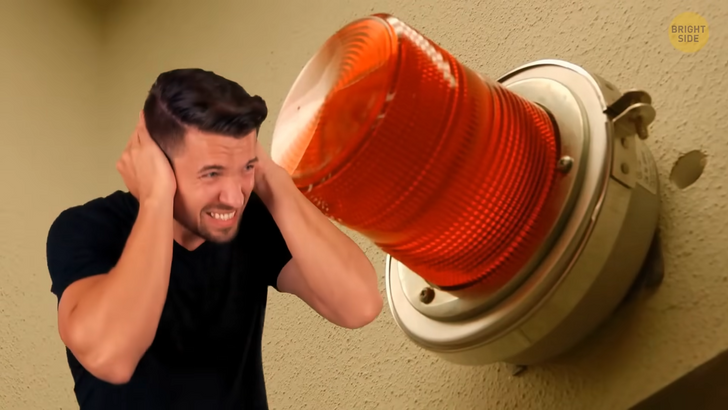
But you can go deeper into Jupiter’s atmosphere. Look at these thick brown, yellow, red, and white clouds passing by! They are what makes the planet look colorful and kinda striped. If you continue descending toward the center of the planet, you’ll see its atmosphere —mostly made up of hydrogen and helium gas — become liquid. It happens because of immense atmospheric pressure.
The planet’s core itself is a mysterious object. Scientists still haven’t figured out whether it’s a molten ball of thick liquid or a solid rock 14 to 18 times the mass of Earth. Anyway, exploring Jupiter isn’t the main goal of your trip. No. You’ve arrived here to see the Great Red Spot. It’s an enormous storm raging in the Southern Hemisphere of the gas giant. Its top parts are towering more than 5 miles above the tops of the surrounding clouds. The storm is 1.3 times wider than our planet!
In 2017, NASA’s Juno space probe managed to collect lots of data about the Red Spot. And it turned out that this monster of a storm goes more than 200 miles down into the planet’s atmosphere. That’s 30 to 100 times deeper than any ocean on Earth. But these measurements are most likely imprecise, and the storm’s true roots can be reaching even deeper!
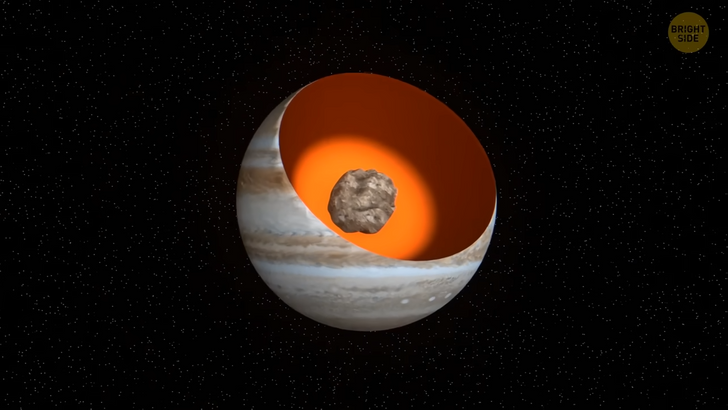
The Great Red Spot is colder than the rest of the atmosphere. And keep in mind that Jupiter’s temperatures are −234˚F in the upper cloud layers! On the other hand, the closer to the core, the hotter it gets. Mysteriously, the highest temperatures ever recorded on the gas giant occurred in the atmosphere right above the Great Red Spot! There, the heat reached 2,400˚F. This temperature is higher than that of lava on our planet.
Astronomers believe that the turbulence caused by the storm might produce gravitational and sound waves that can be responsible for the superheating. But the storm itself is warmer at the bottom than at the top.
People have been watching the moving vortex on Jupiter for more than 150 years. Some time ago, astronomers predicted that it would gradually slow down and become smaller or disappear entirely. But that turned out not to be the case!
After having analyzed all the data received with the help of the Hubble Space Telescope, researchers were baffled to discover that the winds at the outer boundaries of the storm had actually picked up speed! The change in the wind speed is no more than 1.5 mi per hour during one Earth year. It’s a tiny change. But however small the difference is, it still means a lot.

The wind speed at the edges of the storm can reach a mind-boggling 400 mph. That’s faster than Earth’s tornadoes! At the same time, if you found yourself at the center of the Great Red Spot, you wouldn’t be too impressed. The winds there move way more slowly.
Scientists faced lots of challenges when they were trying to understand the mystery that was the Great Red Spot. It’s unclear what fuels the storm. Can it be the nature of the storm’s home planet? Since it’s a gas giant, Jupiter doesn’t have any solid ground — so there’s no friction, which might be the only thing that could make the storm weaken.
The hot gases in the planet’s atmosphere are always moving — rising, falling, swirling... Just like on our home planet, where cooler and warmer air mix and merge into one another, forming giant circling storms.
Astronomers think that once, several enormous storms could have come together and created the Great Red Spot. And now, it keeps going by constantly drawing cool gases from below and hot gases from above. Plus, the storm might be absorbing other, smaller vortices. This makes the Great Red Spot even more powerful.
Unfortunately, thick clouds on Jupiter don’t allow astronomers to see what’s going on in the planet’s lower atmosphere. Scientists have been speculating on what may hide beneath the Great Red Spot for decades. Is it a massive volcano? Unlikely. Jupiter is mostly made up of gases. And it doesn’t have a crust that could crack, letting lava escape from the planet’s interior.
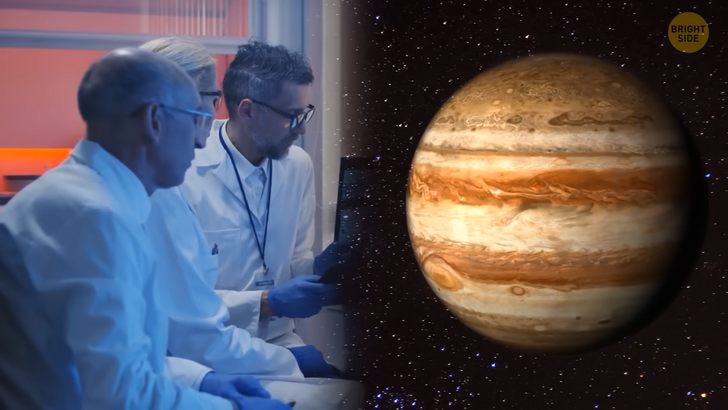
There are also a few theories explaining why the storm has its trademark color. It varies from whitish and pale salmon to bright orange and brick-red. Some scientists believe the answer lies deep below the Great Red Spot, closer to the planet’s “surface.”
A colorless layer of gas might be reacting to the UV radiation coming from the Sun. This is probably what gives the storm its red color. But so far, it’s just a theory. Hey your guess is as good as mine, huh?
Jupiter isn’t the only planet that can boast having a giant storm. Another one, as wide as our home planet, rages on Saturn. It’s called the Great White Spot. How clever! The storm has a tail of white clouds encircling the entire planet! It occurs every 30 years or so.
This storm indeed starts as a spot. But then it starts stretching... and stretching... Astronomers have figured out that the Great White Spot is actually a huge system of thunderstorms. At the top of the storm, lightning can flash more than 10 times per second!
But the main mystery about the Great White Spot is where it gets its energy from. Some scientists think it may be powered by the Sun. Others argue that the storm’s cloud pattern only makes sense if there’s an internal source of heat that can power the winds.
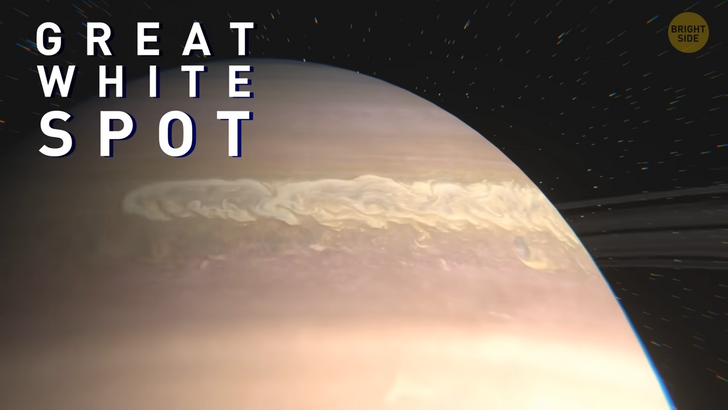
Anyway, severe storms on different planets of the Solar System aren’t the only space mystery that makes astronomers scratch their heads. Let’s move to Pluto — the largest known dwarf planet in the Solar System — and explore its atmosphere.
It rises really high above the surface of the planet and has more than 20 layers — all of them freezing cold and extremely condensed. By the way, our Moon also has some sort of atmosphere. Called an exosphere, it consists of helium, neon, and argon. It’s ten trillion times less dense than Earth’s atmosphere.
While traveling through space, watch out for black holes! Whew! A black hole is a place where gravity is so strong that even light can’t get out. But black holes can sometimes behave like a massive galactic volcano. From time to time, they flare up. Sounds like me. But instead of spewing lava, they produce enormous amounts of energy. And this phenomenon leaves gaping holes in the surrounding material and gas.
A short while ago, scientists discovered one of the largest “craters” in the Universe. Radio and X-ray telescopes detected a supermassive black hole that threw a temper tantrum many, many years ago. It happened in a galaxy cluster about 390 million light-years away from Earth. The “crater” this event left behind could fit 15 Milky Way galaxies! Yeah, I can’t my head around that either.
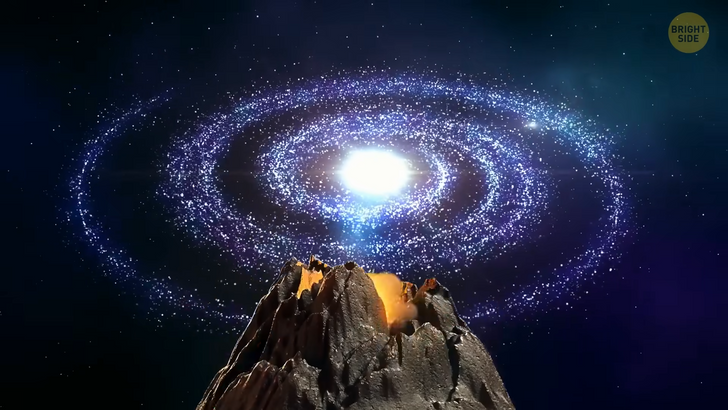
During your space voyage, think twice before landing on unknown planets. Otherwise, you may end up in a place like K2-141b. That’s a planet outside of our Solar System. At first glance, it’s not that different from Earth. It has liquid oceans that evaporate, form clouds, condense, and get back to the surface as rain. But instead of water, it rains... rocks!
The surface of this exoplanet is covered with lava seas dozens of miles deep. The temperatures on K2-141b reach 5,000˚F during the day! That’s toasty enough for the magma in the oceans to vaporize into the atmosphere.
Then supersonic winds, which can move at a speed of 1 mile per second, carry this rock vapor to the planet’s night side. The vaporized magma cools down, becomes liquid again, and falls as a rocky rain. Uh-uh. Not a vacation spot. Too hot. I’ll pass.











